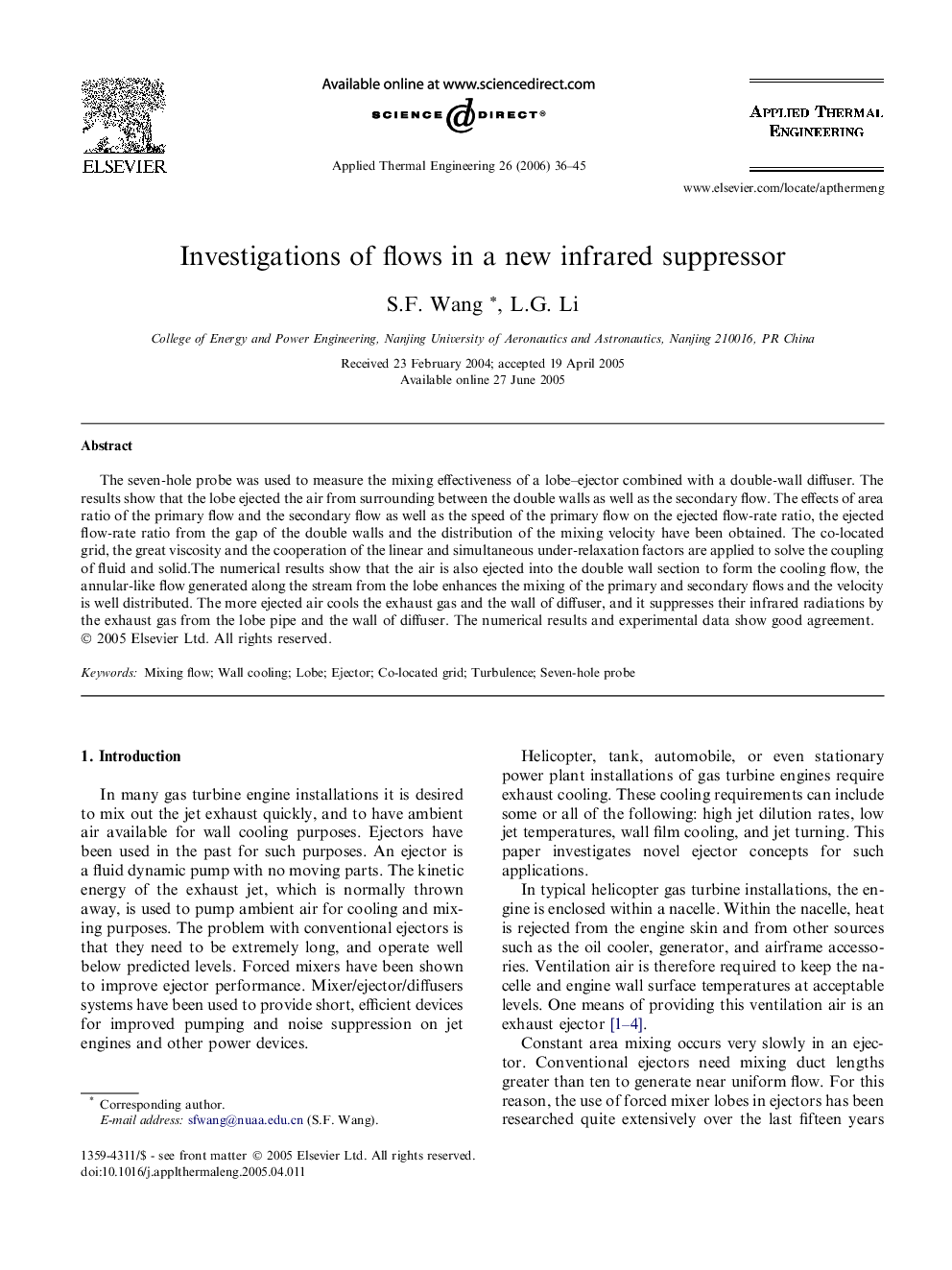| Article ID | Journal | Published Year | Pages | File Type |
|---|---|---|---|---|
| 649873 | Applied Thermal Engineering | 2006 | 10 Pages |
The seven-hole probe was used to measure the mixing effectiveness of a lobe–ejector combined with a double-wall diffuser. The results show that the lobe ejected the air from surrounding between the double walls as well as the secondary flow. The effects of area ratio of the primary flow and the secondary flow as well as the speed of the primary flow on the ejected flow-rate ratio, the ejected flow-rate ratio from the gap of the double walls and the distribution of the mixing velocity have been obtained. The co-located grid, the great viscosity and the cooperation of the linear and simultaneous under-relaxation factors are applied to solve the coupling of fluid and solid.The numerical results show that the air is also ejected into the double wall section to form the cooling flow, the annular-like flow generated along the stream from the lobe enhances the mixing of the primary and secondary flows and the velocity is well distributed. The more ejected air cools the exhaust gas and the wall of diffuser, and it suppresses their infrared radiations by the exhaust gas from the lobe pipe and the wall of diffuser. The numerical results and experimental data show good agreement.
